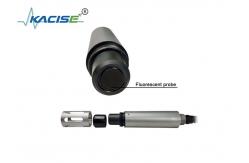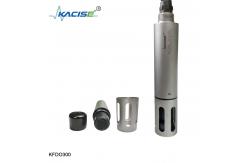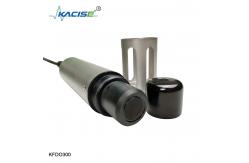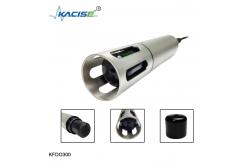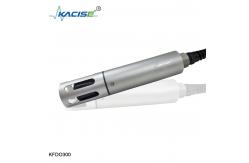Immersion Dissolved Oxygen Sensor Fluorescence quenching
|
KFDO300 Online Fluorescence Dissolved Oxygen Sensor Water Quality Sensor
Integrated design, anti-electromagnetic interference Built-in temperature sensor, real-time temperature compensation Support salinity and air pressure compensation Stainless steel case, IP68 waterproof grade, suitable for various working conditions RS485 signal output, Standard Modbus protocol, easy integration, networking Technical Specifications
General Knowledge of Dissolved Oxygen
Tips:Polarographic Dissolved Oxygen Sensors
A polarographic DO sensor is an electrochemical sensor that consists of a silver anode and a noble metal (such as gold, platinum or infrequently, silver) cathode in a potassium chloride (KCl) solution. When the instrument is turned on, it requires a 5-60 minute warm-up period to polarize the electrodes before calibrating or measuring. The electrodes are polarized by a constant voltage (between 0.4 V and 1.2 V is required to reduce oxygen) from the cathode to the anode). As electrons travel in the opposite direction of a current, the anode becomes positively polarized and the cathode becomes negatively polarized. This polarization occurs as electrons travel from the anode to the cathode via an internal wire circuit. When oxygen diffuses across the membrane, the molecules are reduced at the cathode, increasing the electrical signal. The polarizing potential is held constant while the sensor detects changes in the current caused by the dissolved oxygen reduction. The more oxygen that passes the the membrane and is reduced, the greater the electrical current read by the polarographic DO sensor. This is a two-part reaction – the oxidation of the silver anode and
the reduction of the dissolved oxygen. These reactions occur as
follows: Silver Anode Reaction and Oxidation Gold Cathode Reaction and Oxygen Reduction Overall Reaction The silver anode is oxidized during this process as it gives up its electrons to the reduction reaction, but the oxidation only occurs when measurements are being taken. This reaction is noticeable as the anode darkens (AgCl coating). As the oxidized coating accumulates, the sensor’s performance will degrade. This will be clear not only visually when looking at the electrode, but when using the dissolved oxygen sensor. Readings will be unusually low, will not stabilize, or the sensor will not calibrate. When this occurs, the electrodes can be cleaned to restore sensor performance. Electrode maintenance should be far less frequent than membrane replacement, which is based on application. Contact InformationPhone +86-17719566736 Email sales@kacise.com Location Tangyan South Road, High-tech Zone, Xi'an City, Shaanxi Province, China
|
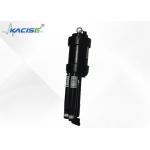
|
KWS-850 On-line Multi-parameter Water Sensor High Accuracy Turbidity Measurement For Wastewater Treatment Plants |
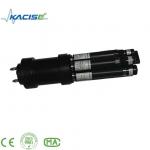
|
Power Consumption 5W 12V KWS-850 Multi-Parameter Water Quality Sensor For Water Monitoring |
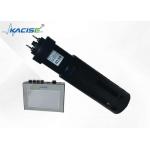
|
Low Maintenance Of The KWS-850 On-line Multi-parameter Water Quality Sensor |
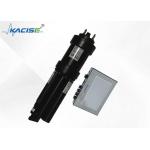
|
Precision KWS-850 On-line Water Turbidity Sensor Water Quality Sensor For Aquaculture |
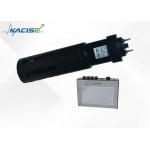
|
The KWS-850 On-line Multi-parameter Water Quality Sensor Can Measure 8 Parameters Simultaneously |
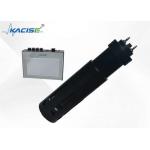
|
The Integrated KWS-850 On-line Multi-parameter Self-cleaning Digital Digital Sensor |

